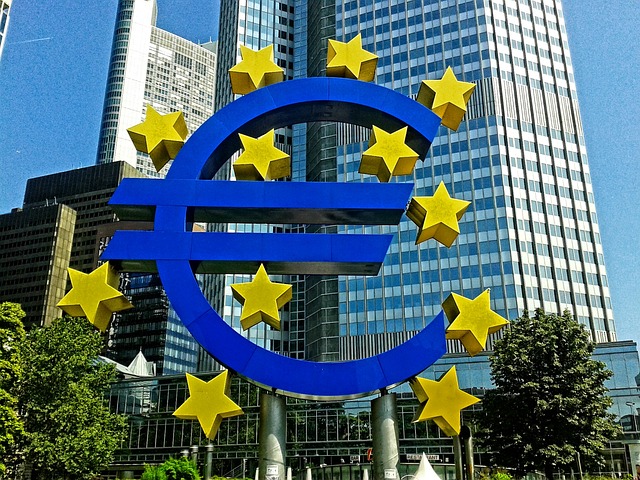It is becoming clearer to markets the ECB is about to embark on another round of QE. So why is the EUR not a lot lower in anticipation of further QE? What has been seen historically is that the anticipation of QE drives the currency down. Actual delivery of the package is not the main currency driver as by that stage most of it is priced in. However, central banks usually over deliver on the day of QE and there is another, albeit small, move lower in the currency. Perhaps the market already believes the ECB will not be able to deliver much.
In relative terms, the ECB's current quantitative easing programme appears modest . Whilst the BoJ's total asset purchases equate to 64% of GDP, and the Fed's 25%, current asset purchases in the Eurozone amount to around 11% of GDP. This alone would indicate relatively simple expansion of the ECB's QE programme, should unwanted EUR strength emerge from a post-hike weakening of the USD.
Unfortunately for the ECB, things are not quite so clear cut. No other central bank engaged in QE must consider more than one sovereign, leaving the ECB constrained by self-imposed technical restrictions. The ECB's bond holdings cannot exceed 33% of the total European market. For new bond issues, it is able only to purchase 25% of bonds with Collective Action Clauses (CACs), and 33% of those without (although that latter limit was upped from 25% on 3 September, indicating some flexibility).
Corporate bonds are currently off-limits, and bonds purchased must have a minimum BBB- credit rating. Furthermore, there exists a pool of eligible financial institutions from which bonds can be bought (though this pool is easily widened), and the ECB cannot buy any bonds that are yielding less than -0.2%. Finally, and of crucial importance, the ECB must adhere to the 'capital key', and allocate 25.6% of its monthly purchases to the Bund market. These rules rule the ECB's policy. The ECB will find it extremely difficult to ignore or find a way around most of these constraints..
At the current pace (EUR60bn/month), it would, in theory, be possible to extend the programme up to Q2 2018. Alternatively, an increase in monthly purchases up to EUR115bn would still comply with restrictions, based on the stock of existing government debt, and forecasts for future issuance, but would last for a shorter time period.
"We think it is most likely the ECB will expand the programme by dropping the explicit reference on the time span of asset purchases. The policy would be open-ended subject to the ECB's projections being consistent with its inflation target", says HSBC.
However, what the ECB can actually do is very different to what the ECB might want can do. Ideally, QE expansion needs to be of a significant size, or perceived as such, for the rhetoric to work. Aside from the exchange rate channel, the other way in which QE is hoped to work is by signalling that the central bank means business; that it will not accept low inflation and will do 'whatever it takes' to bring inflation back up. This will prevent inflation expectations drifting away from target.
"None of the options on the table for the ECB are perfect. QE is a blunt tool and is likely to disappoint in its effectiveness, due to the ongoing lack of banking sector capacity to lend and structural impediments to growth. The technical constraints will make life even harder for the ECB. This could lead to the ECB facing a credibility problem. While for now the market seems to believe the ECB can and will act to weaken the EUR, this way of thinking is unlikely to be sustained indefinitely", added HSBC.



 Singapore Maintains Steady Monetary Outlook as Positive Output Gap Persists into 2025
Singapore Maintains Steady Monetary Outlook as Positive Output Gap Persists into 2025  Kazakhstan Central Bank Holds Interest Rate at 18% as Inflation Pressures Persist
Kazakhstan Central Bank Holds Interest Rate at 18% as Inflation Pressures Persist  BOJ Governor Ueda Highlights Uncertainty Over Future Interest Rate Hikes
BOJ Governor Ueda Highlights Uncertainty Over Future Interest Rate Hikes  Fed Rate Cut Odds Rise as December Decision Looks Increasingly Divided
Fed Rate Cut Odds Rise as December Decision Looks Increasingly Divided  BOK Expected to Hold Rates at 2.50% as Housing and Currency Pressures Persist
BOK Expected to Hold Rates at 2.50% as Housing and Currency Pressures Persist  Japan’s Inflation Edges Higher in October as BOJ Faces Growing Pressure to Hike Rates
Japan’s Inflation Edges Higher in October as BOJ Faces Growing Pressure to Hike Rates  Gold Prices Fall Amid Rate Jitters; Copper Steady as China Stimulus Eyed
Gold Prices Fall Amid Rate Jitters; Copper Steady as China Stimulus Eyed 



























